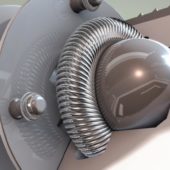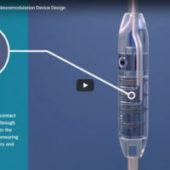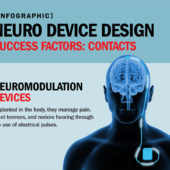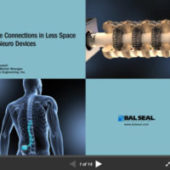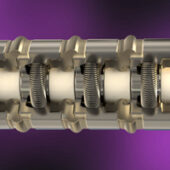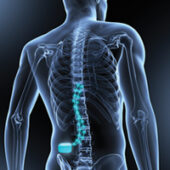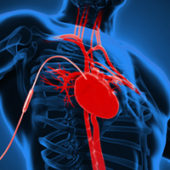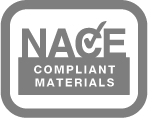When designing orthopedic and medical devices, engineers often encounter the same basic challenge: they need to connect two mating surfaces in a repeatable, predictable fashion. While this may sound like a straight-forward task, there are hundreds of ways to accomplish it. Among the traditional fastening methodologies are: ball detents snap rings molded c-clamps quick...
Archive for category: Conducting
feel free to call us +91.33.26789234 youremail@yourdomain.com
In neuromodulation devices, the role of electrical connectors is critical. These tiny components serve as the interface between the device and lead, facilitating the transmission of electrical signals and the delivery of effective and reliable therapeutic interventions. As device designers navigate the intricate landscape of neuromodulation, careful consideration of criteria for selecting electrical connectors...
Medical Device Electrical Connectors: Optimizing Size and Performance
Bal Contact, Conducting, MedicalThe Bal Conn® electrical contact helps device makers around the world feel confident about their choice of lead interface technologies. This ultra-reliable electrical connector for medical devices has supported performance breakthroughs and shaped industry standards for SCS, DBS, FES, SNS—and it’s contributing to the development of more new therapies every day. Check out the...
Electrical Connectors for Medical Devices: Design Tips to Boost Performance
Bal Contact, Conducting, MedicalDesigning smaller implantable neuromodulation devices with greater connector density is one tough job. But choosing the right electrical connector for your medical device can make it a lot easier. That’s why we’ve prepared this short presentation for you. It examines the relationship between electrical contact selection and the performance of implantable devices. It also...
Contact Springs to Resolve SWaP Connector Challenges
Aerospace & Defense, Bal Spring, Conducting, ConnectingElectrical connectors often employ separate mechanical latching and EMI/RFI shielding components, which adds to their size and weight. In the presentation below, we’ll discuss how contact springs can deliver significant benefit for use in electrical connector applications by reducing size, weight and power consumption challenges. Electrical Connector Design Challenges Electrical connectors consist of a...
Video: SYGNUS® Implantable Connector System in Deep Brain Stimulation Devices
Bal Contact, Conducting, Medical The Crucial Role of Electrical Connectors in Deep Brain Stimulation Devices Deep Brain Stimulation (DBS) has emerged as a groundbreaking therapy for a range of neurological disorders, offering hope to patients who previously had limited treatment options. At the heart of DBS devices lies a small array of electrical connectors, which play...
In the field of medical technology, closed-loop active implantables have revolutionized the way we approach the treatment of various medical conditions. These remarkable devices, such as pacemakers, cochlear implants, and neurostimulators, rely on intricate systems to function properly. One crucial component that often goes unnoticed but plays a pivotal role in their operation is...
At Bal Seal Engineering, we help designers reach new heights and achieve out-of-this-world objectives in space exploration and orbital satellite installation. We’re proud of our contributions to the success of countless critical missions, and we can’t wait to see what’s next. These days, NASA isn’t the only organization with its eye to the skies....
High-Performance 3-in-1 Spring For Semiconductor Equipment Design
Bal Spring, Conducting, Connecting, Industrial, ShieldingWith the Bal Spring canted coil spring, you can achieve a higher level of protection for your semicon processing and test equipment designs, while improving yield and simplifying maintenance for your end user. Our spring lets you do more with less—effectively shielding against EMI, managing high current with low heat rise, and latching components...
The Bal Conn® electrical contact and the SYGNUS® implantable contact system deliver low electrical resistance (as low as 10 milliohms in some sizes) and minimal heat rise for maximum power efficiency and patient safety. Our components are helping designers redefine “temporary” circulatory support by enabling implantation for longer recovery periods.
